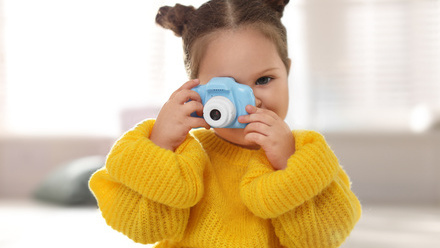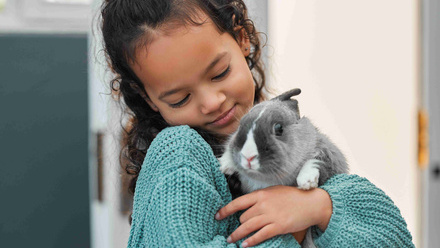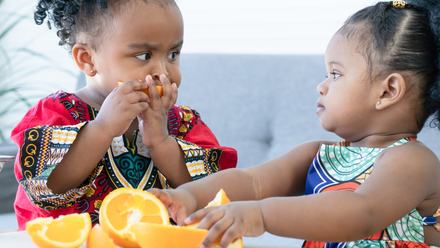Creating a science-based environment
Magic's just science that we don't understand yet.
Arthur C. Clarke
Children are naturally curious. From the moment they are born, babies are exploring the environment, figuring out how things work in the world around them. It is this desire to explore that drove Einstein to discover the laws of gravity, Marie Curie to explore radioactivity and so many other pioneers to make discoveries that make our society what it is today. Through investigation, experimentation and spirit of inquiry, scientific discoveries are made every day – science really is child’s play.
Scientific thinking is all around us and yet it is an area of learning largely disregarded within early education and care. In this article, we are going to explore what we mean by a science-based environment and how it might look in practice.
Scientific literacy
When we talk about types of literacy, we refer to the language that we use in those environments. For example, an emotionally literate environment is one that gives children the opportunity and vocabulary to talk about emotions and engage in responding to feelings.
Scientific literacy involves utilising scientific vocabulary and creating science-based learning opportunities in the environment to develop skills of investigating, analysing and predicting. It provides a new perspective on play that, by harnessing real-life environments, enables children to reflect on the world around them and learn by trial and error. This makes it a particularly useful approach for building resilience and problem-solving strategies.
Why is creating a science-based environment important?
In the UK alone, over 9 million people work in STEM-related roles across all industries – this is a number that continues to grow year on year.
Scientific thinking and technological learning are now more important than ever as the world continues to engineer itself and progress its scientific thought. As early education and care professionals, it is essential that we set children up with the right skills to flourish in the future – an even more advanced and scientifically-minded future than now.
But scientific literacy is not just about thinking like a scientist! Play that incorporates scientific thinking is great for developing a wide range of metacognitive skills, such as:
- problem-solving
- critical analysis
- teamwork
- reasoning
- predicting
- evaluating.
Scientific literacy develops a wide range of skills that can be transferred across all areas of development, making this an approach well worth implementing with children of any age.
How to create a science-based environment?
Making plans
In busy early education and care environments, it can be tempting to plan activities and set everything ready before inviting children to partake. It might be to assess an individual’s progress, limit numbers for safety or prevent mess. Adult-led, planned and constructed practice has its place, but children learn best by seeing the whole context and being involved.
Encourage children to plan activities with you, talking about their interests and thinking together about the different elements to consider.
- What resources will you need?
- If they’re not available, what could you use instead?
- Do you have an appropriate space?
- How much time is needed?
As children begin to learn how to consider all these elements through planning, they will also begin to contextualise thinking and understand how to consider the ‘wider picture’.
Sustained Shared Thinking
Sustained Shared Thinking (SST) is a pedagogical framework developed to encourage constructive conversations between children and adults that enable wider learning opportunities with heightened creativity, teamwork and evaluation. Its ‘shared’ approach uses co-creation to bring child and adult into equal status in the interaction. It is a great way to support children with problem-solving by demonstrating how they can identify issues and highlighting the questions they can ask themselves as they begin to independently evaluate and learn to analyse along the way.
Whilst SST can be used to support a variety of learning outcomes, it is an approach commonly used when thinking about scientific literacy.
Encourage questions
Ever wondered why toddlers go through a phase of asking ‘why’? They’re developing their scientific literacy! Questions are a young child’s best friend. Children in the early years are especially curious as they continue to absorb the world around them at the fastest rate they ever will.
Though it can sometimes be tricky to do so in a way that makes sense to children’s minds, answering questions not only satisfy children’s inquisitive mind (for now!) but also it will give them the confidence to continue to ask, fuelling an endless pursuit to learn. It’s great for developing problem-solving strategies as well as a niche ability to identify gaps in knowledge and navigate how to find solutions. It’s also great for children to see that adults sometimes get it wrong too! Finding solutions together and fixing mistakes helps to build relationships and establish trust between children and professionals.
Key takeaways
Remember, scientific learning is not always about mixing chemicals, wearing goggles and recording measurements. Scientific literacy is a powerful approach that can be utilised through all areas of play to improve metacognitive strategies and give children a new, curious perspective on their every day.
Why not explore some of our early learning resources to think about how you can implement scientific inquiry throughout your curriculum?






